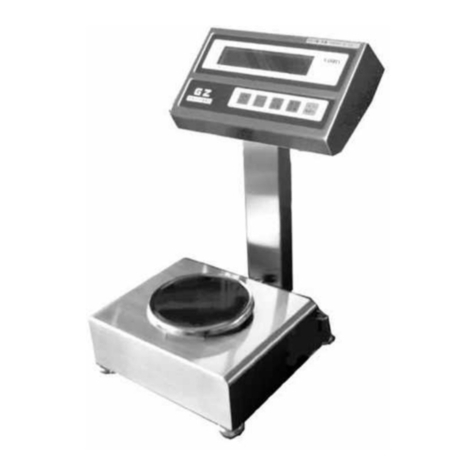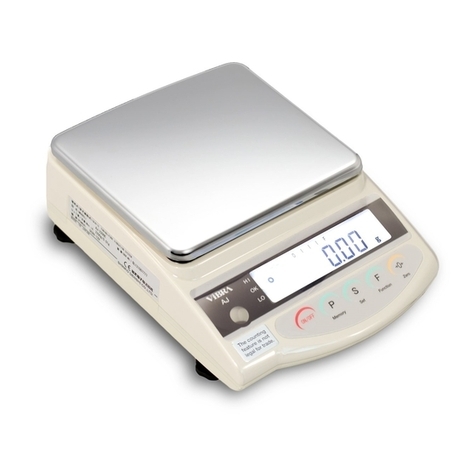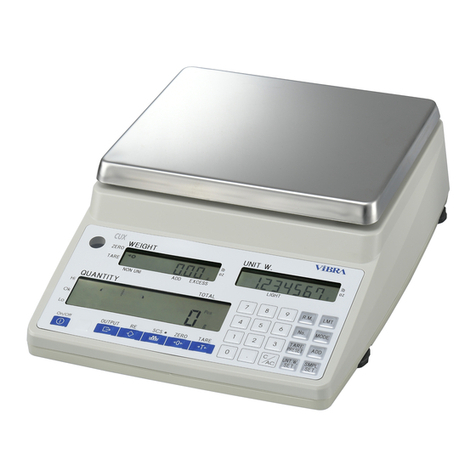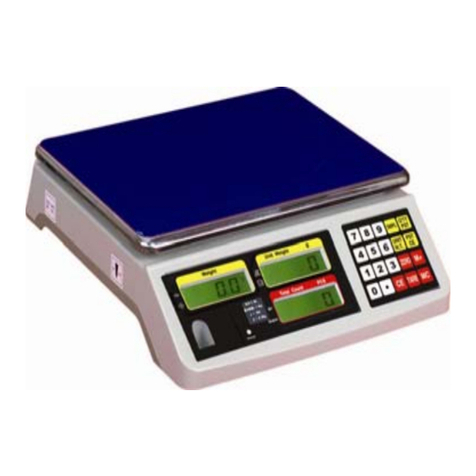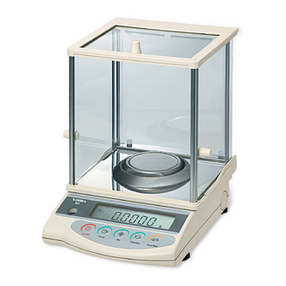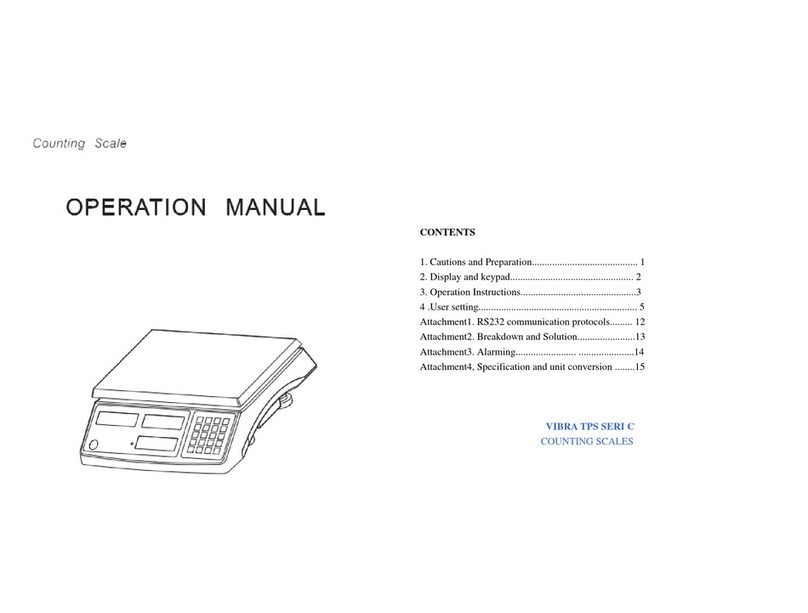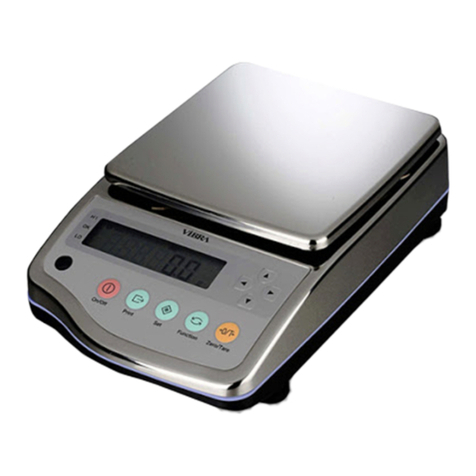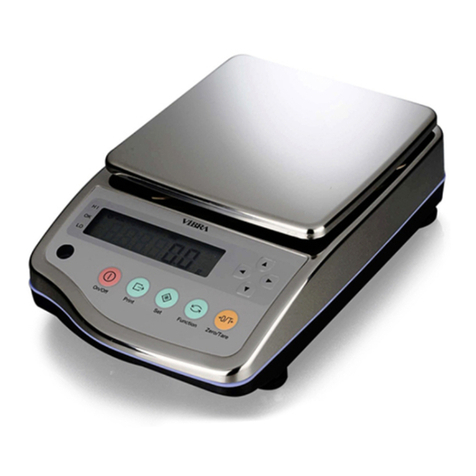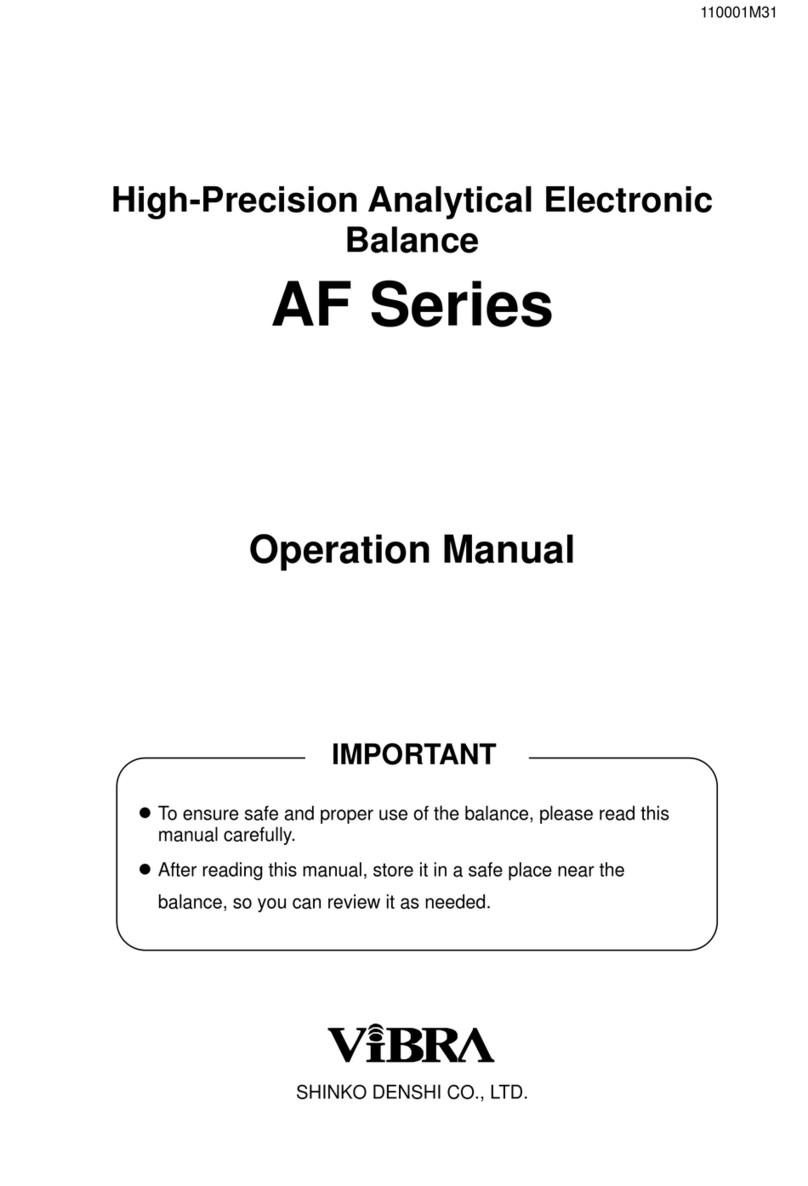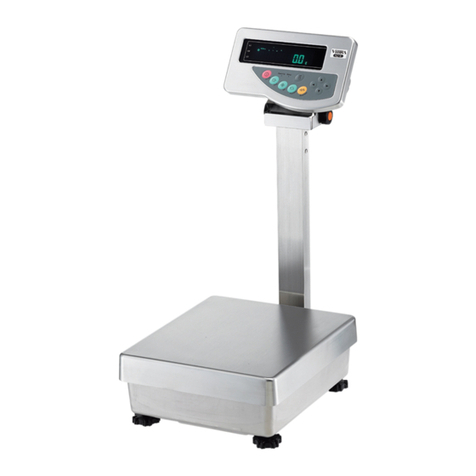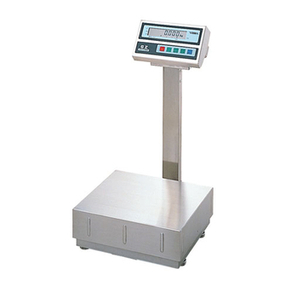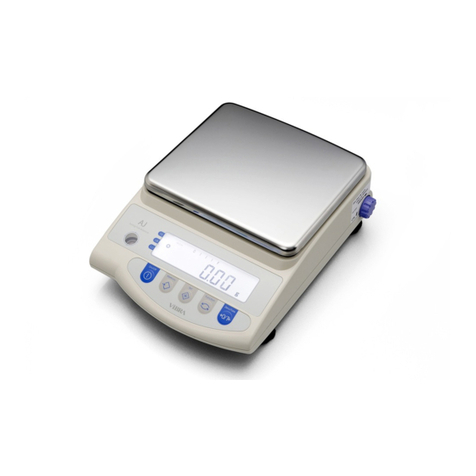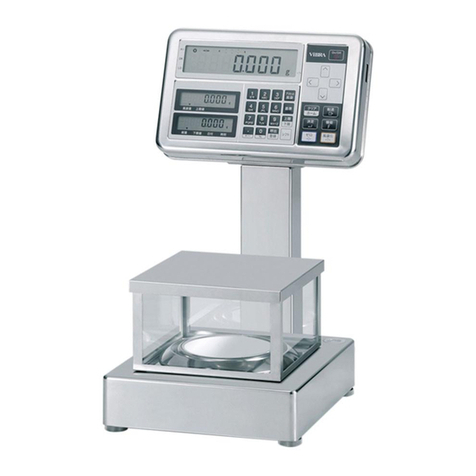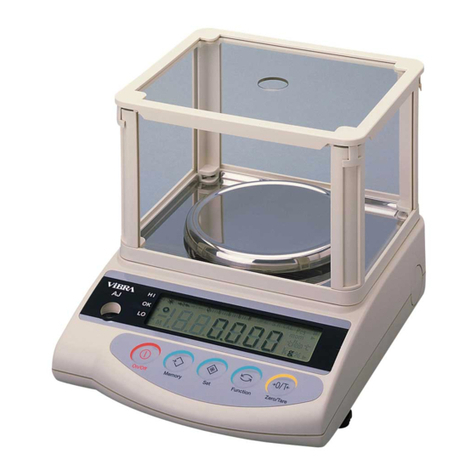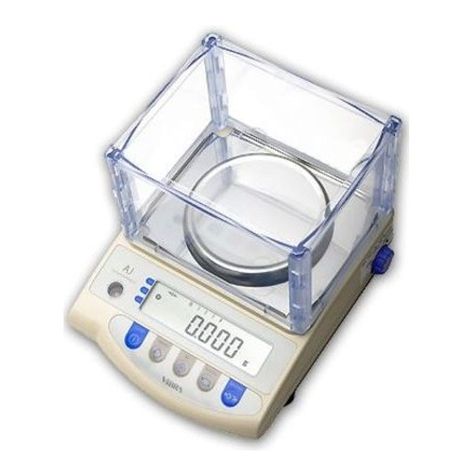6
1-2-2 Precautions on the Measuring Bench
Vibration/
Shaking
→If the balance is subjected to vibration during measurement, its indications will
become unstable, thus preventing accurate measurement from being
conducted. To avoid this situation, select a solid measuring bench that is
less susceptible to vibration. (A bench in a vibration-proof structure or one
made of concrete or stonework will be suitable.) Moreover, do not conduct
measurement with a soft cloth or paper placed under the balance, since the
balance may be rocked out of its precise level positioning.
→Place the measuring bench in a location free from vibration as much as
possible. It is a good idea to install the measuring bench in a corner of the
measuring room, where less vibration is likely to occur than in the center of
the room.
Magnetism/
Static
Electricity
→Avoid operating the balance on a bench that is susceptible to the effects of
magnetism or static electricity.
1-2-3 Precautions on the Samples
Static
Electricity
→Generally speaking, objects made of synthetic resin and glass has high
electric insulating properties and, therefore, are apt to be electrically
charged. Measuring a charged sample as is may cause unstable
indications, with resultant poor reproducibility of the results. With this in
mind, be sure to discharge charged samples before measurement.
Magnetism →A sample affected by magnetism indicates different weight values
depending on where it is located on the measuring pan, along with
resultant poor reproducibility of the results.
When a magnetized sample must be measured, first demagnetize it or
place an appropriate pedestal on the measuring pan to adequately
separate the mechanism part of the balance from the magnetized sample
for avoiding the effects of magnetism.
Absorption/
Evaporation
of Moisture
→Measuring a sample with moisture absorbed or evaporated (volatized)
continuously increases or decreases the values indicated. In such case,
measure the sample in a container with a small opening and sealed
airtight with a cap.
Sample
Temperature
→A difference in temperature between a sample and the interior of a
windshield may cause convection to occur inside the windshield, resulting
in erroneous measurement. Therefore, measure a very hot or cold
sample only after allowing time for its temperature to acclimatize to room
temperature. Moreover, to prevent convection inside the windshield,
allow time for the interior of the windshield to acclimatize to room
temperature.
→The body heat of a person conducting measurement can also affect
measurement results. Avoid holding the sample with bare hands, and
use long tweezers or a similar tool instead. Also refrain from putting your
hands inside the windshield while measurement is in progress.

